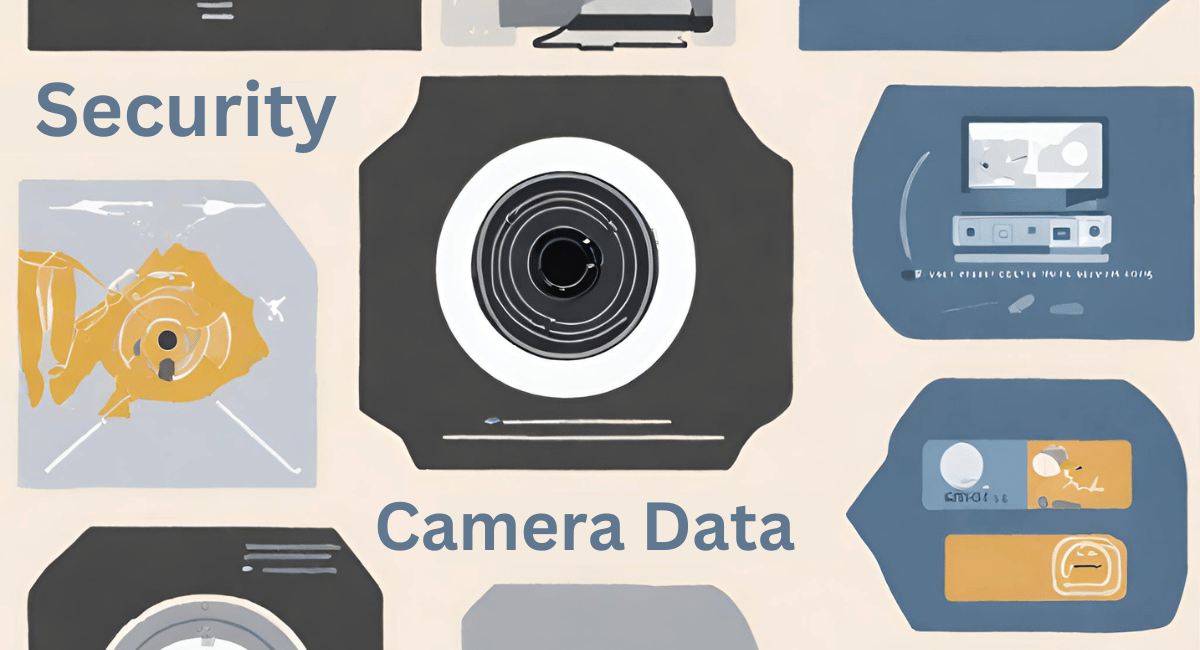The duration for which security cameras keep data typically ranges from 30 to 90 days, depending on factors such as storage capacity, video quality, and the user’s storage policy. After reaching the storage limit, the system usually overwrites the oldest footage with new data.
In today’s digital age, security cameras have become essential to ensuring safety and surveillance in various residential, commercial, or industrial settings. However, one question often arises is how long security cameras keep data. Understanding the intricacies of security camera data storage is crucial for users to make informed decisions and properly oversee their surveillance systems. This comprehensive guide explores various security camera data retention aspects and offers insights on extending the data storage period.
Understanding Security Camera Data Storage
Before delving deeper into the topic, it’s essential to understand what security camera data entails. In simple terms, security camera data refers to the imagery and associated information captured by surveillance cameras. This can include recorded videos, images, timestamps, camera settings, and other metadata.
Regarding data storage, security cameras employ various technologies and methods to store and manage this information effectively. Understanding these storage mechanisms is key to comprehending the factors influencing data retention.
What is Security Camera Data?

Security camera data encompasses a wide range of information, primarily recorded videos, and images. Alongside this primary visual data, security camera systems often capture additional metadata, such as timestamps, camera settings, and event logs. This auxiliary information helps provide context and maintain a comprehensive record of surveillance activities.
How is Data Stored in Security Cameras?
Security camera manufacturers utilize different storage mediums and architectures to store captured data. The two most common methods are local storage and cloud storage. Local storage involves using physical devices, such as hard drives or Network Attached Storage (NAS) devices, installed directly in the camera or connected to a local network. On the other hand, cloud storage leverages the vast resources and scalability of remote servers to store surveillance footage and associated data securely.
Both local and cloud storage have their advantages and considerations. Local storage offers the advantage of higher storage capacities and immediate access to footage, but it may require regular maintenance, backups, and physical security measures.
Cloud storage, on the other hand, eliminates the need for physical infrastructure and offers the convenience of remote accessibility. However, it is essential to consider factors like internet bandwidth, subscription costs, and data privacy when opting for cloud-based storage solutions.
In addition to local and cloud storage, some security camera systems also provide the option of using external storage devices, such as USB drives or Network Video Recorders (NVRs). These devices offer a flexible and expandable storage solution, allowing users to add or remove storage capacity as needed easily.
Another important consideration in data storage is the compression and encoding techniques used by security cameras. These techniques help reduce the size of the captured data without significant loss in quality. Common compression formats include H.264, H.265, and MJPEG. The choice of compression format can impact the recorded footage’s storage requirements and playback quality.
Furthermore, data management features are crucial in ensuring efficient storage utilization. Security camera systems often provide options for scheduled or event-based recording, motion detection, and intelligent analytics. These features help minimize storage consumption by only capturing and storing relevant footage, reducing the overall storage requirements.
It’s also worth mentioning that some security camera systems can encrypt stored data, providing an additional layer of security. Encryption ensures the data remains inaccessible even if the storage medium is compromised without the appropriate decryption keys.
Lastly, as technology advances, new storage solutions are being developed to cater to the ever-increasing demands of security camera data. These include advancements in solid-state storage, edge computing, and artificial intelligence-based storage management algorithms.
Factors Influencing Data Retention in Security Cameras

Data retention in security cameras is a crucial aspect of any surveillance system. It ensures that valuable footage is stored appropriately, allowing for review and analysis when needed. Several factors come into play when determining the duration for which security camera data can be retained.
Camera Type and Its Impact on Data Storage
The type of security camera plays a significant role in determining data retention capabilities. Different camera types have varying storage capacities and capabilities, catering to different surveillance needs. For instance, some cameras may support onboard storage, while others rely solely on network-based storage solutions.
High-resolution cameras or cameras with advanced features like motion detection or facial recognition tend to generate larger file sizes and require more significant storage capacities. These cameras capture intricate details, ensuring that no crucial information is missed. However, it’s essential to consider your specific surveillance requirements and choose camera types that align with your data retention goals.
Influence of Storage Medium on Data Retention

The storage medium you select can substantially impact the duration for which security camera data can be retained. Traditional hard drives and solid-state drives (SSDs) are popular choices for local storage. These storage devices vary in terms of storage capacity, reliability, and cost.
Regarding cloud storage, service providers may offer different plans and retention periods. Cloud storage provides the advantage of remote access and off-site backup, ensuring that footage remains secure even during physical damage or theft. However, it’s crucial to evaluate factors such as storage capacity, data transfer limits, and the provider’s reputation for security and reliability to make an informed decision.
Role of Resolution and Frame Rate in Data Storage
Resolution and frame rate are essential when determining how long security camera data can be stored. Higher resolutions, such as 4K, produce more detailed images but result in larger file sizes. Similarly, higher frame rates capture more frames per second, increasing data storage requirements.
Users can optimize the balance between image quality and storage capacity by adjusting the resolution and frame rate settings. This allows for longer retention of surveillance footage without compromising critical details. It’s important to strike the right balance that suits the specific surveillance needs of your environment.
Moreover, technological advancements continue to push the boundaries of data retention in security cameras. Innovations in compression algorithms, such as H.265, enable efficient storage utilization without compromising image quality. These advancements provide security professionals with more flexibility in determining data retention periods.
So, when considering data retention in security cameras, it is crucial to consider factors such as camera type, storage medium, resolution, and frame rate. By carefully evaluating these factors and aligning them with your surveillance requirements, you can ensure that your security camera system effectively captures and retains the necessary footage for analysis and review.
Legal Aspects of Security Camera Data Retention
Data Protection Laws and Security Cameras
Regarding data retention, it’s crucial to consider legal requirements governing the storage and handling of security camera data. Data protection laws vary across jurisdictions, and failure to comply with these regulations can result in penalties.
In certain regions, such as the European Union, the General Data Protection Regulation (GDPR) mandates that organizations handle personal data, including surveillance footage, with utmost care. This regulation aims to protect the privacy and rights of individuals by imposing strict guidelines on data retention and processing. Under the GDPR, organizations must have a legitimate reason for collecting and storing personal data, and they must ensure that the data is secure and only retained for as long as necessary.
Privacy concerns and limitations on data retention periods are key aspects to consider to ensure compliance with these laws. Organizations must be aware of the specific requirements in their jurisdiction and implement appropriate policies and procedures to safeguard security camera data.
Privacy Concerns Related to Security Camera Data
While security cameras are crucial for ensuring safety and preventing crime, they also raise privacy concerns. As a responsible user, it’s essential to balance effective surveillance and respecting the privacy of individuals within the camera’s range.
Adhering to privacy best practices, such as avoiding unauthorized surveillance areas and ensuring proper data protection measures, helps mitigate potential legal and ethical issues. Organizations should clearly define the purpose of surveillance and limit the collection and retention of personal data to what is necessary for that purpose.
Implementing access control mechanisms, such as restricted access to security camera footage and strict user authentication protocols, is another important step in protecting privacy. Organizations can minimize the risk of misuse or unauthorized disclosure by ensuring only authorized individuals can access the data.
Additionally, organizations should regularly review their data retention policies to align with legal requirements and industry best practices. It’s important to assess whether the retained data is still necessary for the intended purpose and to dispose of any unnecessary data securely.
By taking these privacy concerns seriously and implementing appropriate measures, organizations can not only comply with legal requirements but also build trust with individuals and demonstrate their commitment to protecting privacy rights.
How to Extend the Data Storage Period of Security Cameras
Using Cloud Storage for Security Cameras
Cloud storage can provide an effective solution to extend the data storage period for security cameras. By leveraging remote servers, users can securely store surveillance footage and associated data for more extended periods without the constraints of physical storage devices.
When opting for cloud storage, assessing factors such as storage capacities, data transfer limits, and the security measures the service provider implements is crucial. Investing in a reliable and reputable cloud storage solution ensures seamless data retention and ease of access.
Optimizing Camera Settings for Longer Data Retention
Tweaking camera settings can significantly impact the time data can be retained. By adjusting resolution, frame rate, and motion detection sensitivity, users can optimize storage and reduce the size of individual files without sacrificing critical details.
Furthermore, implementing scheduled recordings, where cameras only record during specific hours or when triggered by events, can further extend the storage period. These settings help strike a balance between capturing significant events and conserving storage space.
FAQs
Can I Recover Old Data from My Security Camera?
The ability to recover old data from security cameras depends on the retention settings of your surveillance system. If your camera’s storage capacity has been exceeded or the retention period has expired, it may not be possible to recover old footage. Regular backups or cloud storage solutions can mitigate the risk of data loss and enable retrieval of older recordings if necessary.
How Can I Secure My Security Camera Data?
Ensuring the security of your security camera data is paramount to protecting sensitive information and maintaining privacy. Implementing strong and unique passwords for camera access, enabling encryption for stored data, and keeping camera firmware up to date are essential security practices. Additionally, selecting reputable vendors and regularly monitoring camera activities help safeguard against potential security breaches.
What is the average duration for which security cameras store data?
It depends on the specific security system, storage capacity, and camera resolution. Typically, most security cameras keep data from 30 to 90 days, after which old data is overwritten by new footage.
Can I extend the storage duration of my security cameras?
Yes, by increasing storage capacity or lowering camera resolution. Another method is motion detection recording, which only records when movement is detected.
Key Takeaways:
- Typical data storage for security cameras ranges between 30 to 90 days.
- Storage duration can be extended by increasing capacity, reducing resolution, or employing motion detection recording.
Conclusion
In conclusion, the retention of security camera data depends on various factors, including camera type, storage medium, resolution, frame rate, legal considerations, and privacy concerns. Users can balance effective surveillance and responsible data management by understanding these aspects and taking proactive steps to optimize data storage. Whether utilizing local storage or cloud-based solutions, making informed decisions regarding data retention is crucial to maximizing the benefits of security cameras while adhering to applicable legal and ethical standards.
